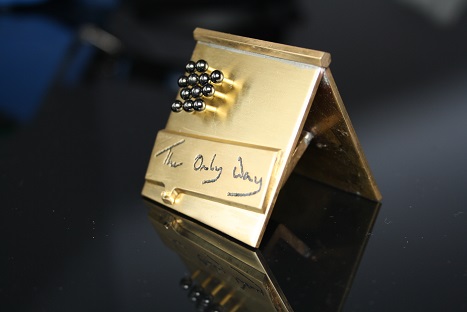The only way model

Simple item made to illustrate the idea. Milled and drilled, taped and screwed in place. Engraved deep to allow selenium to be melted into the channels. Finding a metal that is black and has a lower melting point than the brass was not forthcoming hence this element with its unappealing odour that lingers in the workroom for days on end was an alternative.